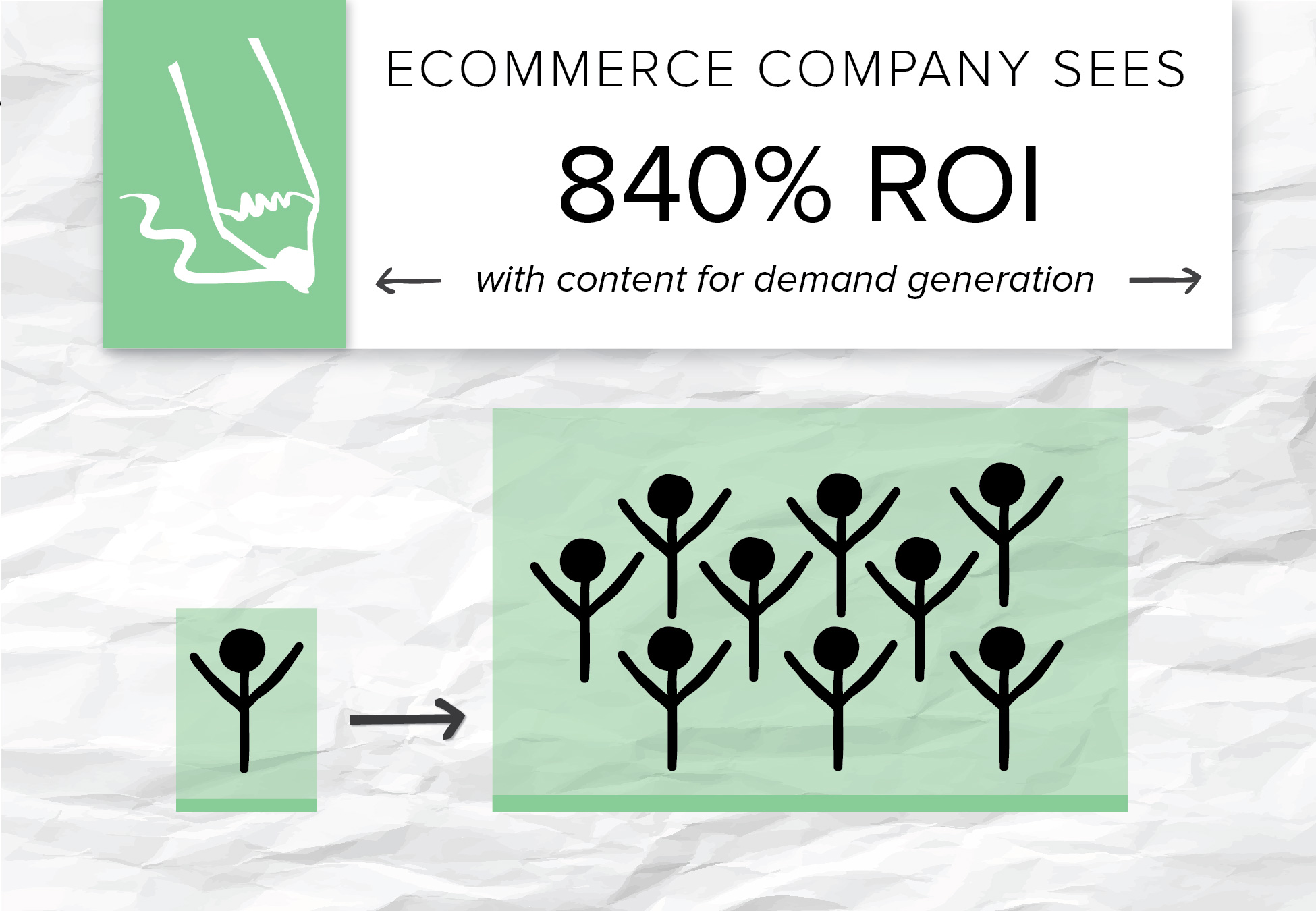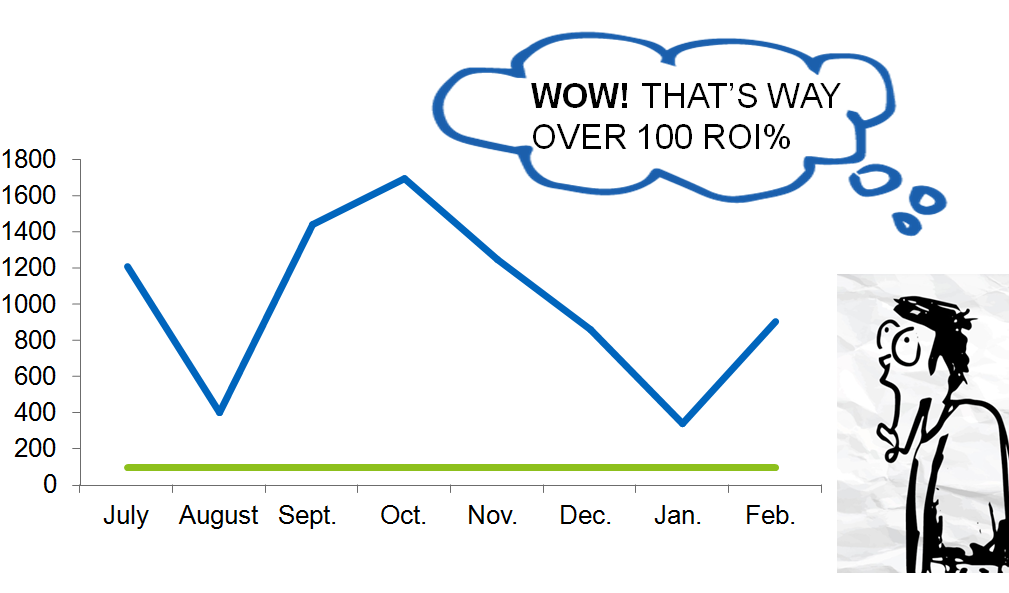Industry: Ecommerce
Content: 2-3 weekly blog posts
Highlights: 840% ROI on content efforts
It’s OK for content marketing to be promotional – sometimes*. When you’ve already grabbed your target audience’s attention with organic, valuable information, you need to nurture that interest. Enter demand generation strategies.
Let’s say you already have prospects’ contact information, but you want to point them to the products that will best serve their needs. You need to demonstrate your company’s competitive differences and explain why they should choose you instead of someone else.
This is when it’s alright to be more promotional and talk about your products within your blog. You just need content that does so without coming off like a sales pitch, because people at the bottom of the funnel still want useful information – not your ad slogan.
*If you’re worried about when it’s appropriate to be promotional and when to be purely informative, check out this blog post: Is Your Content Marketing Strategy TOO promotional?
Goal: Generate demand with blog content
One ecommerce apparel company worked with Brafton to build content for its website. The goal was to produce assets targeting the entire sales funnel, including articles with search appeal that draw in traffic (Think: Catchy headlines, audience-focused lifestyle pieces) as well as blog posts that encourage qualified leads to convert.
Although lead generation is the No. 1 goal in content marketing, it’s not the end of the line for ROI. What happens to those leads once you have them? You need to follow up with visitors to turn their interest into buying intent.
What happens to those leads once you have them? You need to follow up with visitors to turn their interest into buying intent.
Now that content marketing is mainstream, marketers face added pressure to prove strategies are paying off – and not just in terms of leads. They need to show that leads generated are turning into closed deals. A demand generation strategy helps to close the loop, giving qualified readers the details, data and answers they need to decide that your products are the right solution for them.
Strategy: Create bottom-funnel content & promote through email blasts
To reach those marketing goals, Brafton’s content strategists and writers worked with the marketers at the company to brainstorm content ideas. The team worked to produce a diverse range of posts to publish regularly on the blog. That way, the brand would appeal to first-time visitors who are just learning about the company while also providing appropriate product information to convert readers.
The content writers created pieces that answered questions and offered value to visitors on the brink of a purchase decision, and pointed them to product-focused landing pages. Blog posts that generated the most revenue addressed “How to find the right fit” and “Tips for caring for specific clothing items.” These are the kinds of topics that someone would find when they are already interested in the featured topic – when there’s clear interest and intent.
In addition to conscientious topic selection, email nurture campaigns are the key strategic element in this client’s content campaign. The marketing team selects Brafton blog posts to feature in email blasts to its database of leads, providing useful information that keeps people engaged and acts as a catalyst to convert.
Nurture campaigns are another example of when it’s safe to err on the side of being promotional. Whether you’re sending to prospects or customers, this is an opportunity to get a certain product in front of people you think it would benefit.
Results: More conversions from content readers, greater ROI on content investment
As a result of this comprehensive content strategy, the company has seen an uptick in revenue from blog readers. Content ROI averaged at 840 percent over the past quarter, meaning the client was making eight-fold what it was investing in content marketing services.
Put another way, people who came to the site and read the blog content were becoming customers and making purchases online. Visitors who engaged with the blog content in the last quarter converted at a rate 33 percent higher than the average for overall traffic.
While the company was seeing an impact where it matters most – at the bottom of the funnel – it was also making strides at a higher level. Organic sessions over the past quarter increased 15 percent and new users grew 22 percent, indicating the site was drawing first-time readers that could also be nurtured into clients over time.
A lot of marketers shoehorn content marketing into strategy for traffic. But by nature content is flexible, and information can be created for people at every stage of the purchase process. In tapping into the full potential of its blog, this company is making the most out of opportunities online and current consumer trends.







